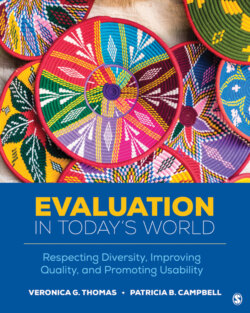Читать книгу Evaluation in Today’s World - Veronica G. Thomas - Страница 73
На сайте Литреса книга снята с продажи.
Mathison’s Description of the Case
ОглавлениеThe program focused on a transition-to-work program and, as such the [inner-city African American] teens were responsible for finding their own internships within the organizations, in this case a museum. This organization provided a vast array of potentially valuable experiences for them [the teens], but for the most part they either floundered about looking for work or worked in menial jobs, such as cleaning the cafeteria. Underlying the program’s inability to provide positive, meaningful work experiences for these teens was a deficit model of inner-city, African American teens—one that presumed they weren’t very able, by definition had psychological problems, and couldn’t really be counted on in things that mattered. The program itself was ethically flawed. As external evaluators we could much more easily raise these issues of racism than could an internal evaluator. We were not seen as having a vested interest (although the staff did feel betrayed by us for raising these issues, and the teens were grateful for being given an opportunity to reveal their perceptions) and were presumed by our expertise to be doing a fair job.
Source: Mathison (1999, p. 33).
The following case study describes an example of how evaluators noticed and highlighted racism inherent in a particular project. Even though Mathison (1999) admits that racism likely did not diminish as a consequence of the evaluation, she contends that at least the evaluation resulted in a range of stakeholders discussing the issue.
